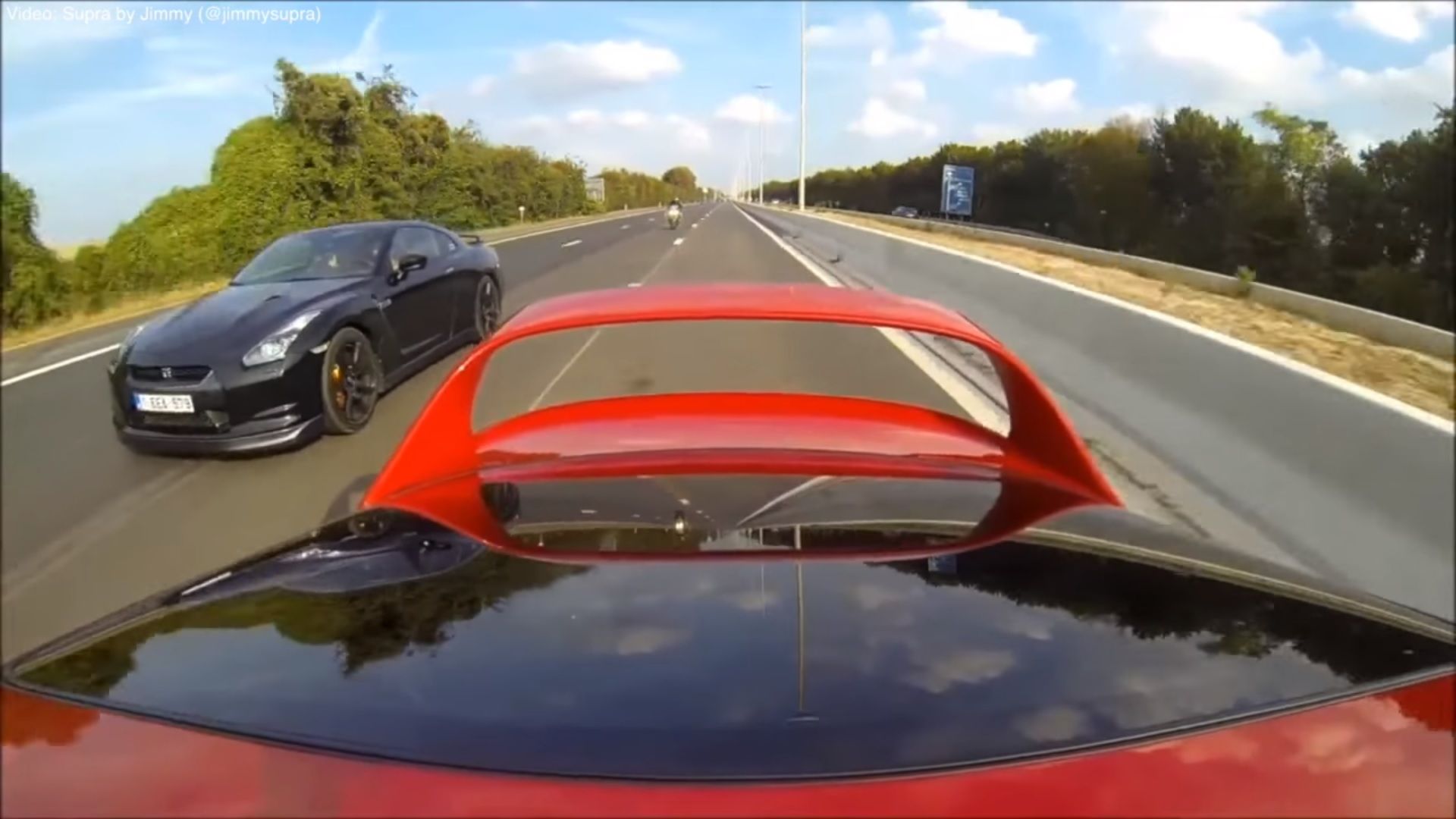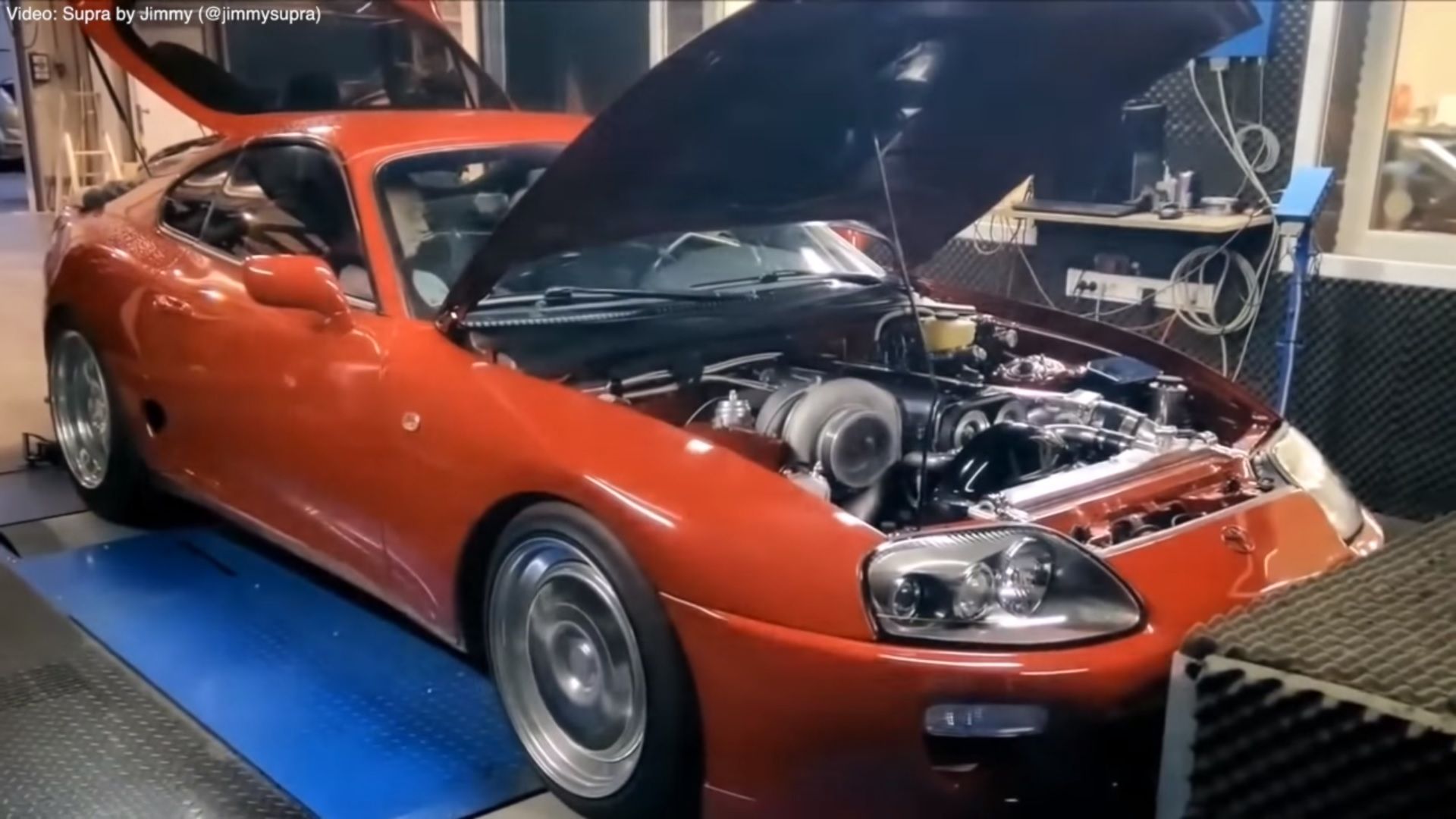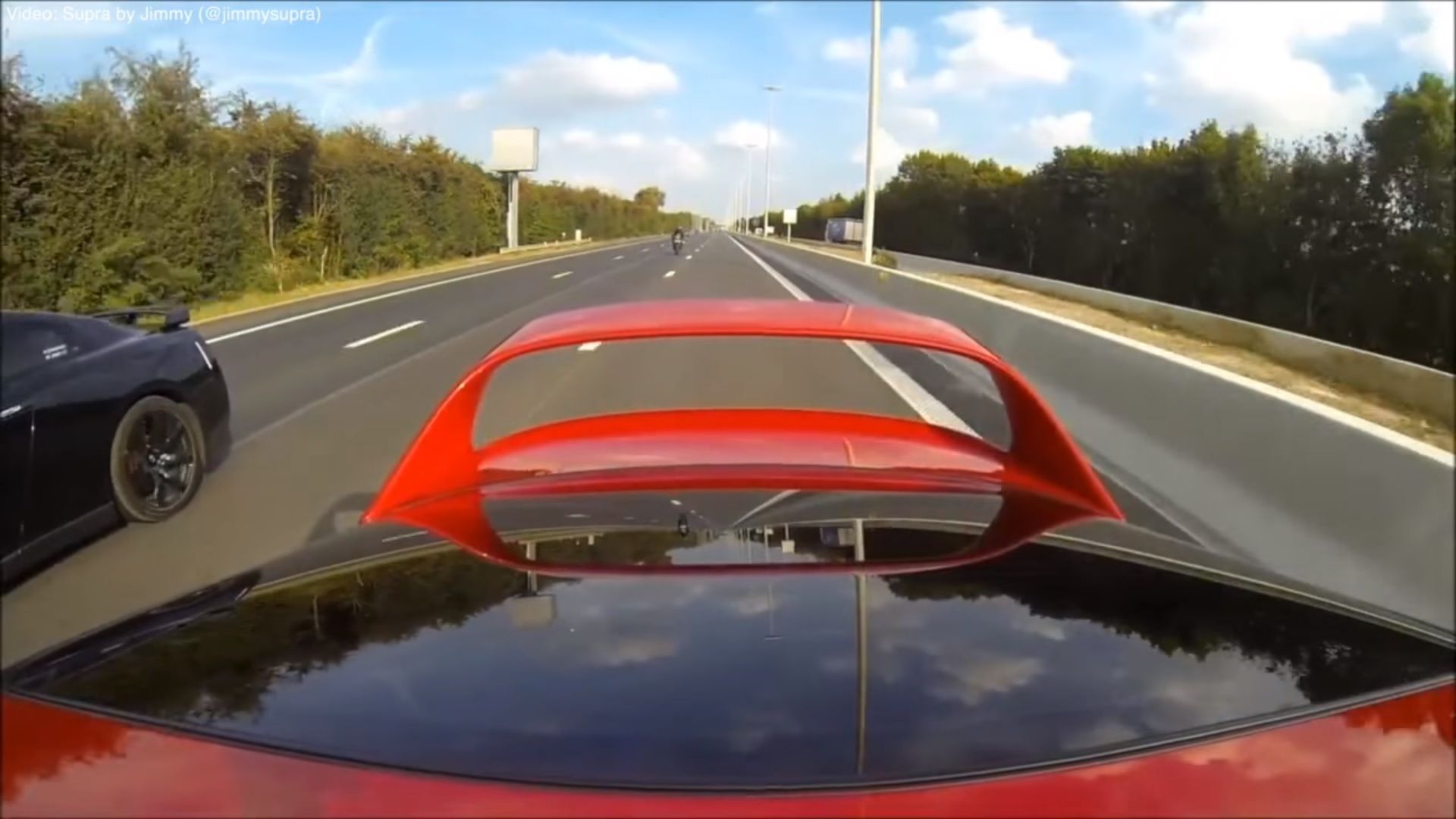The fourth-generation Toyota Supra (Mk4) is arguably the most popular Supra of all time. It’s certainly the unquestioned favorite of the aftermarket auto scene, a lot of which made a lot of money back in the day thanks to how highly customizable the sports car was in its heyday. These days, it’s not uncommon to spot a Supra packing some serious heat. A 1,000-horsepower Supra Mk4? There are a lot of those in the world today. Look hard enough and you might even spot a Supra with an engine setup that produces 1,700 horsepower like the one in this video taking on a Nissan GT-R and a Yamaha R1 in an old-fashioned, albeit illegal, drag race. Don’t let the performance capabilities of Godzilla and the R1 fool you into thinking that these drag races are competitive. They’re not. The Supra takes it easy on both performance machines at first, but once the hammer drops, the GT-R and R1 are left eating its dust. All in a day’s work for this heavily modified Toyota Supra Mk4.
At this point, you should expect that any Toyota Supra Mk4 you see will have some serious ether underneath its hood. That’s how popular the Supra was to the aftermarket world. It came to a point where tuners were building 1,000-horsepower Supras with regularity and that contributed to the aura that has continued to surround the Supra Mk4 to this day. A big part of what made the Supra Mk4 so customizable was its engine, specifically the 2JZ-GTE engine that has established its own mythical following.
So, what makes the 2JZ-GTE engine special and why is it credited as the Supra Mk4’s secret sauce? Part of it can be attributed to how it was built and another part of it can be traced to a gentleman’s agreement of sorts among Japanese automakers. Without going into elaborate detail, the 2JZ-GTE engine’s secret sauce is its cast-iron engine block, which, unlike the lighter aluminum blocks, was so strong it could withstand incredible amounts of power without even breaking a sweat. It was heavier, sure, but the promise of potential power more than made up for being heavier than aluminum engine blocks. It was a compromise that Toyota was willing to make to establish the Supra Mk4 as a performance powerhouse.
So the 2JZ-GTE was capable of accommodating incredible amounts of power. Unfortunately, Toyota couldn’t maximize the engine to its full capabilities because of an agreement it made with other automakers to limit horsepower of its vehicles to 280 horsepower in order to make roads safer. That meant that even if the 2JZ-GTE engine only produced 276 horsepower, it was capable of more power. A lot more power. Think of a glass as the 2JZ-GTE engine and the water inside it as the amount of output it had at its disposal. In the case of the Supra Mk4, that glass was less than half-full, possibly even just a quarter-full.
Toyota Supra 2JZ-GTE specifications
|
Displacement: |
2,997 cc |
|---|---|
|
Configuration: |
inline-six |
|
Boost pressure (stock): |
9 psi |
|
Power output: |
280 hp @ 5,600 rpm |
|
Torque: |
320 lb-ft @ 4,000 rpm |
That’s where the aftermarket tuning world comes in. Since it wasn’t bound by the same agreement that Toyota and other automakers had in place, tuners far and wide could maximize the 2JZ-GTE’s engine close to its full potential. It’s been said that tuners could double the 2JZ-GTE engine without having to make any modifications to the engine’s stock assembly. Of course, we’ve come to see that tuners did a lot more than that. Some tuners simply replaced the stock twin-turbocharger with a single, albeit larger unit, and squeezed out close to 900 horsepower out of the engine. In full bloom, many believe that the 2JZ-GTE engine is capable of producing more than 2,000 horsepower, a staggering number that has proven to be attainable over the years as we’ve seen more Supra Mk4s packing power in that stratosphere.
The Supra Mk4 in this video doesn’t produce 2,000 ponies, but with 1,700 horses on tap, it comes pretty darn close. The specifics of the tuning work done on this particular Supra Mk4 are unclear, but we can surmise that it’s carrying bigger turbochargers and possibly a new fuel system. It’s got some serious boost, too, which explains why it managed to flick off Godzilla like it was a mosquito. The Yamaha R1 stood no chance, too, as will any exotic that dares stand in the way of this Supra Mk4.
Further reading
Read our full review on the 2017 Nissan GT-R.
Read our full review on the 1993 - 1998 Toyota Supra.




